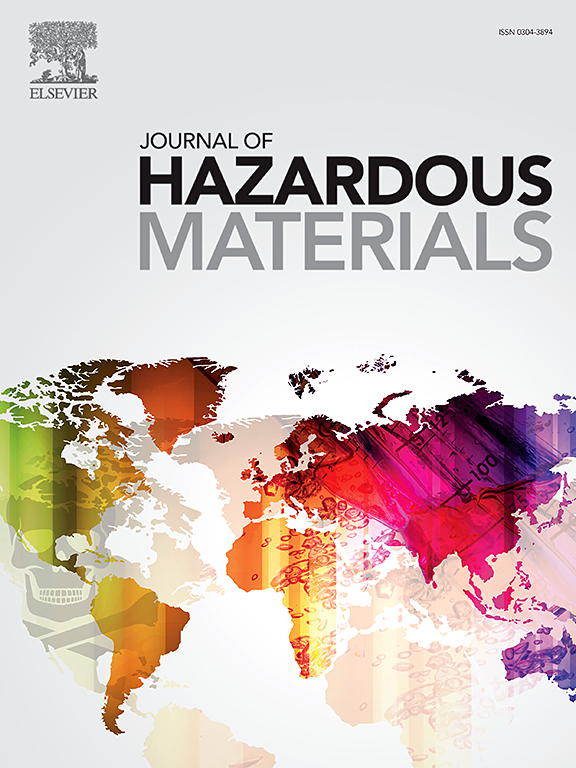Unraveling microplastics release in bottled water under in-vehicle conditions using carbon quantum dots
IF 12.2
1区 环境科学与生态学
Q1 ENGINEERING, ENVIRONMENTAL
引用次数: 0
Abstract
Exposure of plastic cups/bottles to high temperature and sunlight results in the release of microplastics (MPs), raising significant health and environmental concerns. This study established a novel, quantitative detection framework of MPs from bottled water with polyethylene terephthalate (PET) packaging stored under in-vehicle thermal and sunlight stress. Leveraging ethylene glycol-derived carbon quantum dots (EG-CQDs) as fluorescent probes, the study addressed limitations in traditional MPs detection by achieving high sensitivity (LOD: 0.15 ppm), operational simplicity, and compatibility with ionic matrices. Our findings confirmed that EG-CQDs exhibit size-independent stability and sensitivity for PET detection, with fluorescence intensity correlating linearly (R2 >0.9) across two concentration ranges: 0–0.5 ppm and 0.5–50 ppm. By combining controlled vehicle exposure simulations with optical, chemical, and morphological analyses, this study revealed that prolonged sunlight and heat accelerated PET degradation, producing up to 10.03 ppm MPs within 28 days. Findings provide mechanistic insight into CQDs–PET interactions, validate the dual role of photothermal degradation, and contextualize environmental risks of bottled water misuse in transport scenarios.

在车内条件下,利用碳量子点解开微塑料释放到瓶装水中
塑料杯/塑料瓶暴露在高温和阳光下会导致微塑料(MPs)的释放,引起严重的健康和环境问题。本研究建立了一种新的、定量的检测框架,用于检测车内高温和阳光胁迫下储存的PET瓶装水中MPs的含量。利用乙二醇衍生的碳量子点(EG-CQDs)作为荧光探针,该研究通过实现高灵敏度(LOD: 0.15 ppm)、操作简单以及与离子基质的兼容性,解决了传统MPs检测的局限性。我们的研究结果证实,egg - cqds在PET检测中表现出与尺寸无关的稳定性和灵敏度,荧光强度在0-0.5 ppm和0.5-50 ppm两个浓度范围内呈线性相关(R2 >0.9)。通过将受控车辆暴露模拟与光学、化学和形态分析相结合,该研究表明,长时间的阳光和热量会加速PET的降解,在28天内产生高达10.03 ppm的MPs。研究结果提供了CQDs-PET相互作用的机理,验证了光热降解的双重作用,并将瓶装水在运输场景中滥用的环境风险背景化。
本文章由计算机程序翻译,如有差异,请以英文原文为准。
求助全文
约1分钟内获得全文
求助全文
来源期刊

Journal of Hazardous Materials
工程技术-工程:环境
CiteScore
25.40
自引率
5.90%
发文量
3059
审稿时长
58 days
期刊介绍:
The Journal of Hazardous Materials serves as a global platform for promoting cutting-edge research in the field of Environmental Science and Engineering. Our publication features a wide range of articles, including full-length research papers, review articles, and perspectives, with the aim of enhancing our understanding of the dangers and risks associated with various materials concerning public health and the environment. It is important to note that the term "environmental contaminants" refers specifically to substances that pose hazardous effects through contamination, while excluding those that do not have such impacts on the environment or human health. Moreover, we emphasize the distinction between wastes and hazardous materials in order to provide further clarity on the scope of the journal. We have a keen interest in exploring specific compounds and microbial agents that have adverse effects on the environment.
 求助内容:
求助内容: 应助结果提醒方式:
应助结果提醒方式:


